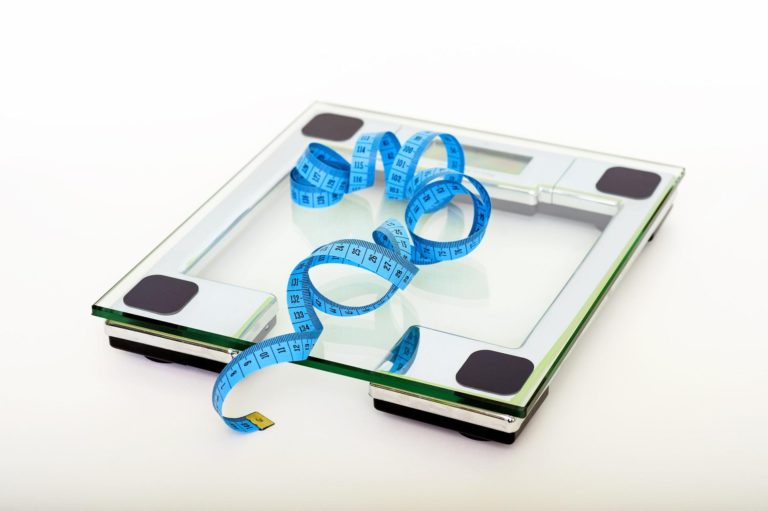More than 94 million adults above 20 suffer from high cholesterol levels and 7% of children and adolescents aged 6 to 19 suffer from high cholesterol in the USA. Seventeen percent of adults with a high total lipid level had low amounts of high-density lipoprotein (HDL cholesterol)
Having high cholesterol levels is a major risk factor for heart disease, the leading cause of mortality and stroke, ranked as the fifth cause of death in the USA. Sex or gender is one of the factors that affect lipid levels, hence why we will be looking at the cholesterol normal range for female.
What information are we hoping to pass across in this write-up? We’d like you to know what cholesterol is, types of lipids, factors that affect blood lipid levels, normal range fat levels, and age, how to test for cholesterol levels, and ways to lower your cholesterol levels.
Cholesterol Overview
Before looking at anything else, we first need to understand what cholesterol is. Cholesterol is a fatty wax-like substance produced by your body and provided by high-fat animal products.
What you should know about this lipid is that your body produces most of what (75%) you need for optimum body function, so you need a small percentage from your diet.
Cholesterol isn’t as bad as we were made to believe in the era when we asked to completely eradicate it from our diet. Doing away with fat in your diet means inadequate production of sex hormones, a lower number of cells, improper digestion of fats due to inadequate bile production, and vitamin D deficiency.
A diet rich in fat is not bad if you are focusing on the quality of the food you’re consuming. Eating good cholesterol and staying clear of bad cholesterol will reduce risk factors for cardiovascular diseases like coronary artery disease.
Types of Cholesterol
When I talk about the quality and not the quantity of lipids, you may be wondering what I mean and why it is relevant. Different types of cholesterol contribute to total cholesterol, which affects cardiovascular disease risk factors differently.
Low-Density Lipoprotein (LDL cholesterol)
Low-density lipoprotein, LDL, or bad cholesterol is what you should be worried about. This type increases your risk of developing heart disease. Low-density lipoprotein is very difficult for the body to digest, so it deposits itself on the walls of your blood vessels, narrowing them and restricting blood flow. This cholesterol buildup creates high blood pressure in your blood vessels. This condition is referred to as atherosclerosis.
This deposit, referred to as plaque can fall off from arterial walls, and due to high blood pressure can be transported in major vessels. Atherosclerosis can lead to coronary artery disease, peripheral artery disease, and carotid artery disease, putting one at risk of a heart attack and stroke.
Very low-density lipoproteins are precursors of LDL which increases your risk of heart disease. Excessive consumption of trans fats and saturated fats elevates LDL cholesterol levels. How does this happen? The mechanism of action of trans fats and excess saturated fats on elevated LDL cholesterol levels is attributed to the action of PGC-1 beta.
Peroxisome proliferator-activated receptor gamma coactivator 1-beta (PGC1beta) regulates the oxidation of fatty acids in the body and mitochondrial oxidative phosphorylation. Consumption of trans fat and high intake of saturated fats activates this hormone, which increases liver production of very low-density lipoproteins. This is why LDL levels tend to rise after consuming junk foods and processed foods increasing risk factors for heart disease.
An important point to note is that you may have high cholesterol levels and high LDL levels but are not at risk of heart disease. Why? Because it depends on which type of LDL is high.
- Large buoyant LDL: This is the type of LDL with no negative impact on heart health.
- Small density LDL: this is the dangerous type that increases risk factors for heart disease like hypertension.
High-Density Lipoprotein

High-density lipoprotein, or good cholesterol is the type you need to improve heart health. If you have a high total cholesterol level, but from high HDL and not non-HDL levels, you need not be alarmed.
HDL cholesterol removes LDL lipids and other cholesterol that cause heart disease in the bloodstream and transports them to the liver to be excreted in a process referred to as reverse cholesterol transport. HDL cholesterol also possesses anti-inflammatory and antioxidative functions preventive cell and tissue oxidative damage.
Triglycerides
Triglycerides are the building blocks of cholesterol and contribute to total cholesterol count. High levels of triglycerides can also increase your risks of getting a heart attack and other cardiovascular diseases.
Your total cholesterol refers to all lipids circulating in your blood whether good or bad. Non-HDL cholesterol refers to all the fat that increases your risk of getting heart disease and is calculated by subtracting HDL cholesterol from total cholesterol.
Remember high cholesterol levels don’t necessarily mean you are at risk of heart disease, as long as your high blood lipid levels are because of the good and not bad cholesterol levels.
What Causes High Cholesterol Levels?
High triglyceride and LDL lipid levels and a low HDL fat level cause hyperlipidemia, hypercholesterolemia, or dyslipidemia. There are genetic and lifestyle factors that cause an increased risk of high blood cholesterol. These include:
Risk Factors of High Cholesterol

The major risk factors that put you at risk of developing high cholesterol:
- Poor diet: A diet high in saturated and trans fats will lead to unhealthy cholesterol levels
- Obesity
- Lack of physical activity
- Lifestyle factors like alcohol consumption and smoking
- Family history: if you have a family history of high cholesterol you are at a higher risk of this disease.
- Age: The more you age, your liver becomes less efficient in digesting non-HDL cholesterol. People above 40 are at a higher risk of developing a high blood cholesterol level than children.
Other risk factors like medical conditions e.g., diabetes, and medications used for acne, cancer, and high blood pressure can cause elevated cholesterol. All these increase your risk of heart disease later in life.
What is The Normal Range for HDL and LDL?
High cholesterol is diagnosed with a blood test called a lipid panel or lipid profile. It tests your HDL, LDL, total cholesterol, and triglycerides. You will not be allowed to consume any foods and liquids except water for 9 to 12 hours before you have your cholesterol checked.
The American College of Cardiology/American Heart Association cholesterol guidelines define healthy lipid levels for adults as follows:
LDL Cholesterol Normal Range
Normal lipid levels for LDL cholesterol are less than 100 mg/dL, and below 70 mg/dL if the patient is suffering from coronary artery disease.
HDL Cholesterol Normal Range
A normal HDL level ranges from 60 mg/dL and above. A reading below 40 mg/dL is an indicator of heart disease.
Triglycerides
Normal triglyceride levels are below 150 mg/dL, depending on whether you are fasting or not.
Non-HDL Cholesterol
The normal ranges for non-HDL cholesterol are 130 mg/dL and lower. The ranges vary with age and gender.
Total Cholesterol
Any readings of 200 mg/dL and lower are considered normal total cholesterol levels. Blood lipid levels above 240 mg/dL are considered too much cholesterol levels.
What Should my Cholesterol Be by Age?
We have said that age is a risk factor for high cholesterol levels. The normal range of blood lipid levels differs with age and gender. This is because your cholesterol levels rise with age due to decreased liver function.
The Center for Disease Control advises taking cholesterol tests frequently to detect and manage any anomalies in lipid levels.
- Healthy adults should have their cholesterol checked once every 4 to 6 years.
- If you have a family history of high cholesterol or are diabetic you should have your cholesterol checked regularly.
- Children and adolescents should have cholesterol checked once between the age of 9 and 11 and again between 17 and 21.
- Obese children and adolescents should get their cholesterol checked more often.
Naturally, males have a higher lipid level than females, while females’ levels tend to rise after menopause.
Here are the lipid levels for children 19 and under by the National Institute of Health:
- Total cholesterol: Less than 170 mg/dL
- LDL levels: Less than 100 mg/dL
- HDL levels: More than 45 mg/dL
- Non-HDL cholesterol: Less than 120 mg/dL
Cholesterol Normal Range for Female

Men have a higher blood fat level normally than women, but things change when women enter menopause. Normal cholesterol levels are similar in men and women. The difference comes in the HDL cholesterol normal range for a female above 50, in menopause. So, what is the cholesterol normal range for female?
LDL Ranges for Female
An LDL cholesterol reading of 100 mg/dL or lower is considered within the normal range. The lower the reading the better. A reading ranging from 130 mg/dL to 159 mg/dL is considered moderately elevated and anything above 160 mg/dL is too high. These readings apply to men too.
Total Cholesterol Ranges for Female
Any reading below 200 mg/dL is an ideal lipid level. A reading ranging from 200 to 239 mg/dL is considered moderately elevated and anything above 240 mg/dL is high cholesterol. The same ranges apply to men.
Triglycerides
Triglyceride levels below 149 mg/dL are normal, although less than 100 mg/dL is ideal. Levels from 150 to 199 mg/dL are moderately elevated and readings above 200 are too high.
HDL Normal Range for Female
This is where things get interesting. Any readings above 60 mg/dL are considered good because a high level of good cholesterol lowers the bad. On the lower end, a reading less than 40 mg/dL is considered low for men, while a reading below 50 mg/dL is low for women.
These numbers mean women above 50 years need a higher level of HDL cholesterol.
Why Cholesterol Matters for Women?
Cholesterol levels are high throughout men’s life because of the hormone testosterone. Why is the cholesterol normal range for female higher in women above 50 years in menopause? This is because of the decline in estrogen levels that fluctuate post-menopause.
The high levels of estrogen in women have been shown to boost the levels of HDL lipids. This is effective in lowering cholesterol levels and reducing cardiovascular risk factors. Estrogen levels peak during menstruation, meaning HDL levels are high too, and LDL levels lower before menstruation.
Estrogen levels fluctuate in menopause due to hormonal imbalances. Menstruation stops and levels of estrogen drop, elevating total cholesterol and LDL levels, and lower HDL cholesterol levels.
A review done to assess the effects of orally administered estrogen in pre-menopausal women showed that hormonal therapy with estrogen lower the prevalence of atherosclerotic vascular diseases. Cessation of estrogen production after menopause increases cardiovascular risk.
Another study to investigate the effects of menopausal use of exogenous estrogen on high-density lipoprotein levels resulted in a higher level of HDL cholesterol levels in estrogen users than postmenopausal nonusers.
Post-menopausal women are at a higher risk of dyslipidemia and hypertension than men increasing their risks of developing coronary artery disease and atherosclerosis. Estrogen imbalances in menopause are a clear indication that women above 50 need higher amounts of HDL fats. This is because of the role it plays in blood pressure regulation and cholesterol metabolism.
What is The Best Medicine to Reduce Cholesterol?
One way to treat high cholesterol is by using cholesterol-lowering medication. If you are at risk of developing cardiovascular disease, and lifestyle changes aren’t working, you can use meds to manage your cholesterol. Here are a few CDC-approved cholesterol-lowering medicines:
Bile Acid Sequestrants
These medications lower cholesterol levels by removing cholesterol in the blood by inhibiting the production of bile acids. Your body needs bile acids which are produced from the breakdown of LDL cholesterol.
How are bile acids relevant in regulating bad cholesterol levels? Cholesterol is a precursor for bile acids and bile acids play a big role in the absorption of cholesterol in the intestine. Bile acid sequestrants inhibit intestinal cholesterol absorption.
Niacin
Niacin or nicotinic acid lowers cholesterol by inhibiting enzymes that regulate its production. It also increases the concentration of good cholesterol which removes bad cholesterol from the bloodstream. Moreover, it can lower triglyceride levels. It may take a few weeks to alter cholesterol levels, depending on the individual.
Injectable Meds
Also known as PCSK9 cholesterol absorption inhibitors lower the concentration of cholesterol-increasing LDL receptors, which concurrently lowers LDL levels. For individuals with genetically induced hypercholesterolemia cholesterol inhibitors are the best meds to lower your cholesterol.
Statins
Your cholesterol levels will go down after taking statins because it slows down the rate at which your liver produces fats. It only takes them a few hours to start working, however, it may take 4 to 6 weeks to notice any significant changes in cholesterol levels.
Fibrates
Fibrates are less effective than other drugs. They lower lipid levels by inhibiting the production of triglycerides. Fibrates activate lipoprotein lipase, reducing levels of LDL in the bloodstream. They stimulate the LDL receptor-dependent clearance mechanism by increasing the formation of LDL with a high affinity for LDL receptors that are easily catabolized.
How Can a Woman Lower Her Cholesterol?
The cholesterol normal range for female is higher after menopause. Good news is there are natural ways you can lower your lipid levels without medication. These methods are as effective for men as well:
- Increase physical activity: low to moderate-intensity workout has been proven to improve lipid profile. Spare 30 to 60 minutes for aerobic exercise to reduce the risk of cardiovascular disease. Jogging, swimming, running, and walking are ways you can manage your cholesterol levels.
- Eat healthy fats: Foods rich in healthy fats contain monounsaturated and polyunsaturated fats (MUFAs and PUFAs) which can regulate your blood lipid levels. Nuts, olive oil, and avocado oil do not raise LDL levels.
Oils like coconut oil are high in saturated fat, but the good kind. They contain monounsaturated triglycerides (MCTs) which promote heart health.
- Limit alcohol intake
- Increase intake of fiber: High-fiber foods like low-carb vegetables are rich in fiber which can help regulate cholesterol. Soluble fiber binds to fats lowering cholesterol absorption and its release to the bloodstream.
It also forms a gel-like substance that removes bile salts, cholesterol, and sugar from the body improving insulin resistance and dyslipidemia.
- Lose weight
- Consider a healthy diet: the ketogenic diet can be helpful to someone trying to regulate blood cholesterol because it is a heart-healthy diet. It restricts carbs which trigger ketosis, the breakdown of fats for energy.
It also promotes the intake of high-fat foods that maintain fat oxidation of body fat. Great sources of fat on the keto diet are fatty fish like tuna, seafood like shrimp, poultry like chicken, lean meats, nuts, coconut oil, olive oil, full-fat Greek yogurt, and dairy products like cheeses and cream.
Some of these foods are rich in saturated fat like omega 3 and 6 which are useful for manufacturing cell membranes and for brain health. You also eat lean protein on keto to preserve muscle mass.
- Stop smoking.
- Avoid processed meats and foods, red meats, sugary foods, and high-sodium foods.
Even as you are working on regulating your cholesterol levels, regularly do a cholesterol test to be in the know and detect any risks to your heart on time. The National Cholesterol Education Program created by the National Heart, Lung, and Blood Institute provides cholesterol education resources you can use to help reduce your risk of heart disease, heart attack, and stroke.
What are the Warning Signs of High Cholesterol?
High cholesterol has no symptoms, so the only way to be sure is to take a blood test. Other than the blood test, look out for symptoms of stroke because cholesterol buildup, if left untreated can cause a heart attack or stroke. The symptoms include:
- Fatigue
- Slurred speech
- Angina
- Difficulty in breathing
- Cold or numb extremities
- Nausea
- Hypertension
If you have any of these symptoms and have a family history or risk factors of high cholesterol, seek medical attention immediately.
Final Thoughts
High cholesterol increases your risk of developing cardiovascular disease. Levels of lipids vary depending on age and gender, and early management of high cholesterol reduces your risk of heart disease late in life. Family history can increase your risk of elevated lipid levels, but lifestyle factors also play a big role in improving your lipid profile.
There are meds you can use to lower cholesterol, but if your issue is not genetic, consider a more natural approach. A low-carb, high-fat diet rich in healthy fats, paired with physical activity can help with weight management, glucose, and lipid metabolism, all cardiovascular risk factors.
I’d like to know, how do you manage your blood lipids? What lifestyle changes have you taken up to promote healthy cholesterol levels? When was the last time you did a cholesterol test? Let’s chat in the comments below!







